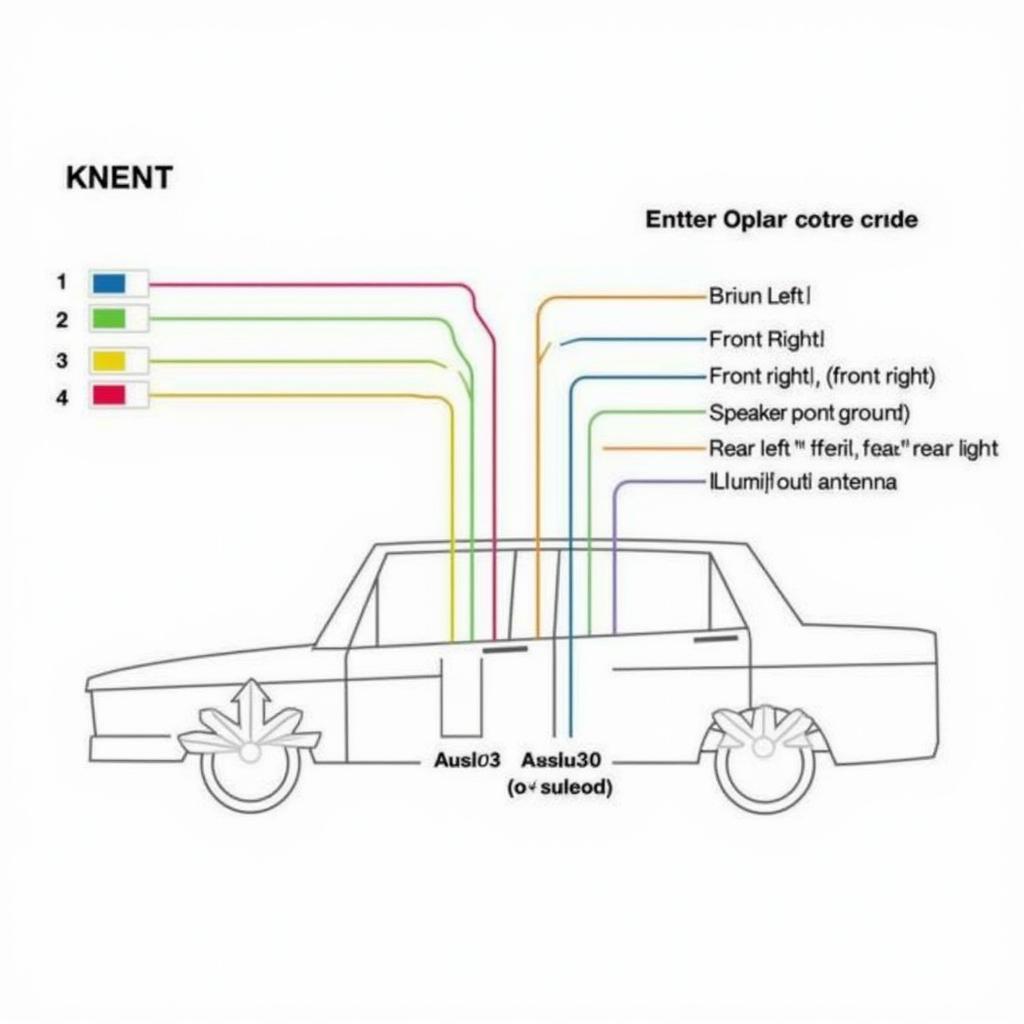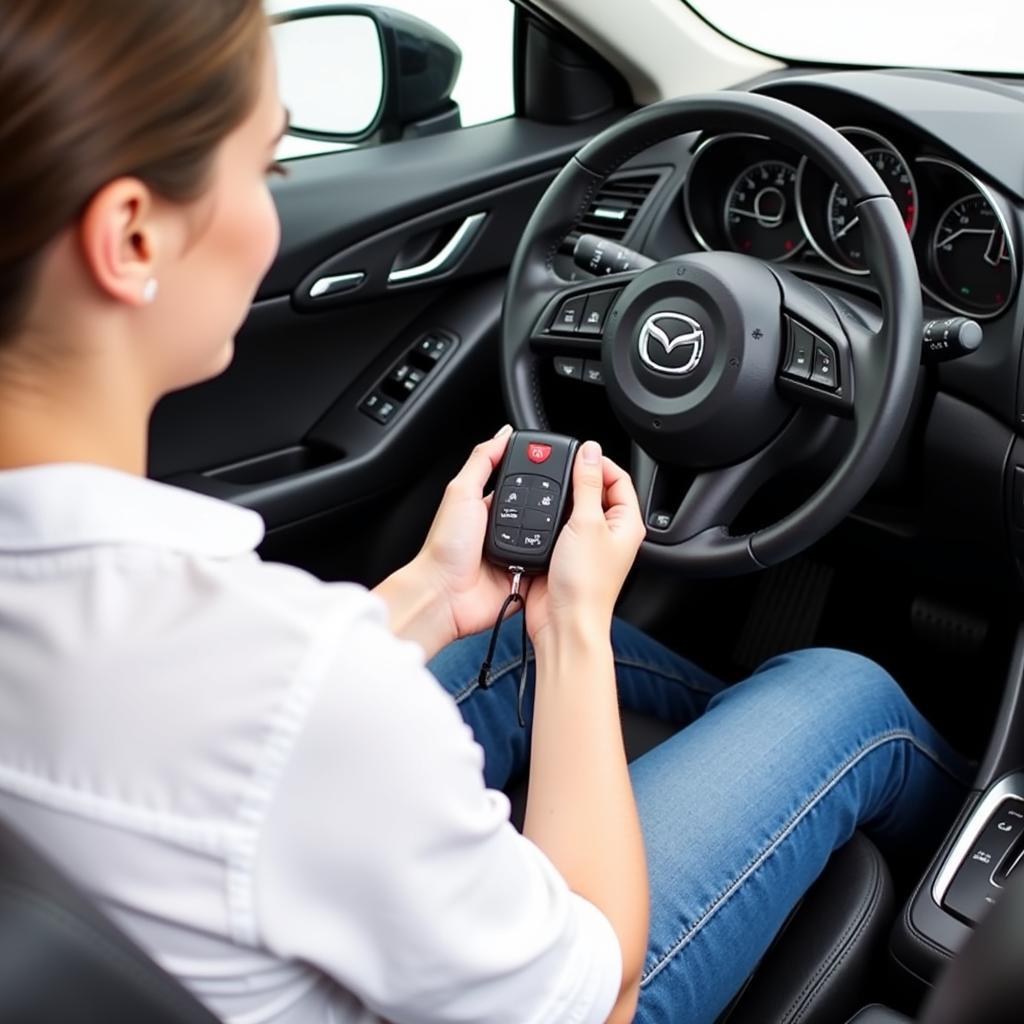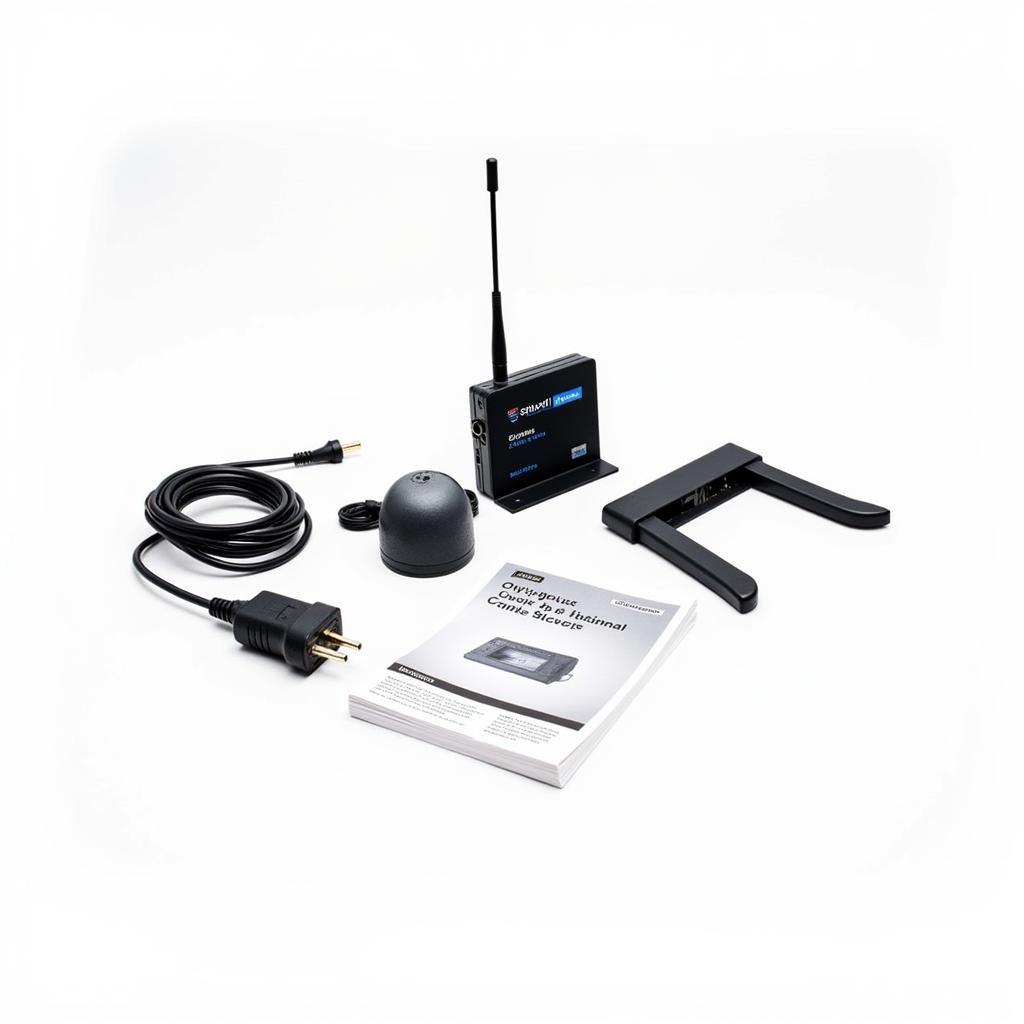Understanding car radio wiring color codes is crucial for any car audio enthusiast or DIY mechanic. Whether you’re installing a new stereo, troubleshooting a faulty connection, or adding aftermarket accessories, knowing which wire does what can save you hours of frustration and potential damage to your car’s electrical system. This guide will delve into the intricacies of car radio wiring, providing you with the knowledge you need to confidently tackle any car audio project.
What are Car Radio Wiring Color Codes?
Car radio wiring color codes are a standardized system used by car manufacturers to identify the function of each wire in a car’s audio system. Each wire is assigned a specific color, representing its purpose, such as power, ground, speaker connections, and other functions. This system simplifies the installation and troubleshooting process, allowing for easier identification of wires without relying on complex diagrams.
 Car Radio Wiring Color Codes Diagram
Car Radio Wiring Color Codes Diagram
While there’s a general standard, variations exist between car manufacturers and even specific car models. Consulting your car’s wiring diagram is always recommended for accurate information.
Standard Car Radio Wiring Color Codes
While variations exist, several color codes are commonly used across different car makes and models. Here’s a breakdown of the most common car radio wiring color codes:
- Yellow: Constant 12V power. This wire provides continuous power to the car radio, even when the ignition is off, allowing for memory functions like saved radio presets.
- Red: Switched 12V power. This wire provides power to the car radio only when the ignition is turned on.
- Black: Ground. This wire completes the electrical circuit and is essential for the proper functioning of the car radio.
- Blue: Power antenna. This wire provides power to the car’s power antenna when the radio is turned on.
- Orange: Illumination. This wire controls the dimming of the car radio’s display based on the vehicle’s lighting settings.
- Green: Front left speaker positive (+)
- White: Front left speaker negative (-)
- Gray: Front right speaker positive (+)
- Purple: Front right speaker negative (-)
- Brown: Rear left speaker positive (+)
- Black/White stripe: Rear left speaker negative (-)
- Light Green: Rear right speaker positive (+)
- Blue/White stripe: Rear right speaker negative (-)
Troubleshooting Car Radio Wiring Issues
If your car radio isn’t working correctly, understanding the wiring color codes can help you pinpoint the issue. Here are some common problems and troubleshooting tips:
- No Power: Check the yellow and red wires for proper voltage using a multimeter. A blown fuse or a faulty ignition switch could be the culprit.
- No Sound: Verify the speaker wire connections, ensuring correct polarity. Test the speakers using a known good audio source to rule out speaker issues.
- Antenna Not Working: Check the blue wire for power. A faulty antenna or a broken antenna cable could be the cause.
Working with Aftermarket Car Radios
Installing an aftermarket car radio often requires an adapter harness to connect the new radio to the car’s existing wiring. These harnesses are designed to match the color codes of both the car and the aftermarket radio, simplifying the installation process.
Why Accurate Wiring is Important
Incorrect wiring can lead to various issues, including:
- Damaged Car Radio: Connecting wires incorrectly can short-circuit the radio, leading to permanent damage.
- Blown Fuses: Overloading a circuit due to improper wiring can blow fuses, causing various electrical systems in the car to malfunction.
- Fire Hazard: In extreme cases, incorrect wiring can create a fire hazard, posing a serious safety risk.
“Understanding car radio wiring color codes is essential for anyone working on their car’s audio system,” says John Smith, a certified automotive electrician with over 20 years of experience. “It not only simplifies the installation process but also helps prevent potential damage to the car’s electrical system.”
Conclusion
Mastering car radio wiring color codes empowers you to tackle car audio projects with confidence. Remember to consult your car’s specific wiring diagram for accurate information and always double-check your connections before powering on your car radio. This knowledge will not only save you time and frustration but also ensure the safety and longevity of your car’s audio system.
FAQ
- Where can I find my car’s specific wiring diagram? Your car’s owner’s manual or online resources dedicated to car repair can often provide this information.
- What should I do if the color codes in my car don’t match the standard codes? Always refer to your car’s specific wiring diagram. Variations can exist between car makes and models.
- Can I install an aftermarket car radio myself? Yes, with the right tools, knowledge, and resources, you can install an aftermarket car radio yourself. However, if you are unsure, consult a professional.
- What tools do I need for car radio wiring? Essential tools include a wire stripper, crimping tool, electrical tape, and a multimeter.
- What should I do if I encounter a problem while wiring my car radio? If you encounter a problem, disconnect the battery and consult a professional if needed. Safety should always be your top priority.
- Are there any online resources that can help me with car radio wiring? Numerous online forums and websites dedicated to car audio can provide valuable information and assistance.
- What’s the importance of using a wiring harness adapter? A wiring harness adapter simplifies the installation of an aftermarket radio by matching the color codes of the radio and the car’s existing wiring, preventing potential damage.
A key fob door entry system can sometimes be integrated with the car radio for added convenience. For information about key fobs, check out our guide on door key fob. We also have articles on fob key door and even garage door remote key fob. If you’re interested in cloning your key fob, our article on clone town and country key fob touch less door unlock could be helpful.



